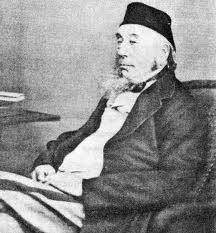The Organ
William Hill (1789–1870)

William Hill joined Thomas Elliott's firm in London in 1815 and went into partnership with him in 1825, forming the new firm of Elliott & Hill. Hill set up on his own in the 1820s and became known for his attempts to increase the power and versatility of the organ. He expanded the swell division, increased pipe scales, introduced 16’ & 32’ ped stops and extended keyboard compasses. Two of his early mammoth instruments were Birmingham Town Hall (1834), which contained the world’s first high-pressure reed and York Minster (1833). These two organs were built on an unprecedented scale and required successive modification to enable them to function correctly. In 1834 he built the organ of Kings College, Cambridge which was successively modified in 1859, 1889 and 1911. It was rebuilt by another firm later in the 20th century.
During the period 1838-56, Hill focused on developing the “German System” organ which represented a departure from the then English style. Features of the system included what we now consider normal compasses, an independent pedal division, 16’ manual choruses, a large swell division and novel flute, string and reed registers. The aim was for power with musical versatility with some influence from the ‘rediscovery’ of the music of Bach. During this period he was responsible for laying the foundations for mature Victorian organ.
The period 1856 to 1870 is represented by increasing sophistication in construction and tonal refinement in Hill’s work. He placed chorus reeds on higher pressures, used heavier metals in pipe-making and gave more spacious internal layouts in his organs. The influence of Schulze was seen in use of quint mixtures, wooden strings and small gedeckts. Organs built in this period include:
- All Saints Margaret Street (later rebuilt)
- York Minster (later rebuilt)
- King's College, Cambridge (later rebuilt)
- St Alban's Abbey (later rebuilt)
- Ulster Hall, Belfast (1862)
- Sydney Cathedral (1866)
- Bath Abbey (later rebuilt)
- Melbourne Town Hall (1870)
William Hill was the most significant English organ builder of his generation. His innovative approach represents the transformation of late Georgian organ to mature Victorian instrument. He laid the foundations for the work of Willis and Lewis, amongst others, as well as for later generations of his own firm. His death coincided with the onset of the most presigious period of his main competitor, Henry Willis.
